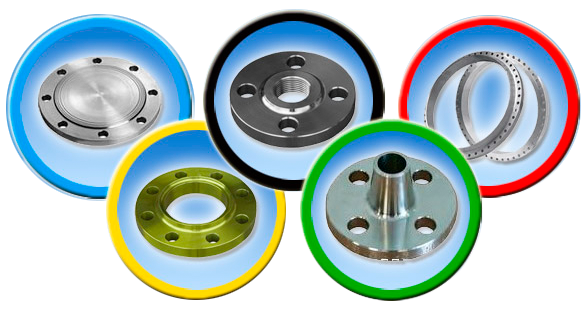What is the difference between flat welding flange and butt welding flange
The main types of flanges are butt welding, flat welding, socket welding, overlap, thread, blind plate, etc.
Flat welding flange, where the inner diameter of the flange is equivalent to the outer diameter of the pipeline, is used to weld the flange inside the pipeline. Depending on the situation, both the inside and outside can also be welded. Butt welding flange refers to a high and medium pressure flange with a neck, which is a section higher than the opposite side of the flange and is used for welding. The groove has been processed and can be welded once the groove is aligned.
Flat welding and socket welding are different. Socket welding flanges are suitable for connecting small diameter, high-pressure, and high-temperature pipelines. Flat welding has a stepped sealing surface that serves to compress the sealing gasket, and then the pipe is inserted inside for welding. Socket welding means that there is no boss, and a groove is directly made on the flange body, just like a hole is made on a blind flange, and then a groove is made.
Flat welding has slightly better welding performance than socket welding. Flat welded flanges are generally used and can be used anywhere. The main types of flanges are butt welding, flat welding, socket welding, overlap, thread, blind plate, etc. Butt welding flanges are used for pressures above 4.0MPa and flammable, explosive, and toxic media.
Flat welding flanges are generally used in general situations.
Flat welding flange, where the inner diameter of the flange is equivalent to the outer diameter of the pipeline, is used to weld the flange inside the pipeline. Depending on the situation, both the inside and outside can also be welded. Butt welding flange refers to a high and medium pressure flange with a neck, which is a section higher than the opposite side of the flange and is used for welding. The groove has been processed and can be welded once the groove is aligned.
Flat welding and butt welding refer to the welding methods used when connecting flanges and pipelines:
1. When welding flat flanges, only one side welding is required without welding the inner opening of the pipeline and flange connection. The welding device for butt welding flanges requires double-sided welding of the flange. So flat welded flanges are generally used for low and medium pressure pipelines.
2. Butt welding flanges are used for the connection of medium and high pressure pipelines. The flange for butt welding is generally at least PN2.5MPa, and the use of butt welding is to reduce stress concentration. Generally, butt welding flanges are mostly neck flanges, also known as nipple flanges. So the installation cost, labor cost, and auxiliary material cost for welding flanges are higher due to the additional process.
3. Butt welding flanges do not require both internal and external welding, and there are no special requirements. Generally, only one external welding is required. Flat welding flanges are a relatively easy type of welding, as the pipes and flanges are well aligned and straight, so the pipes will not be inclined.



